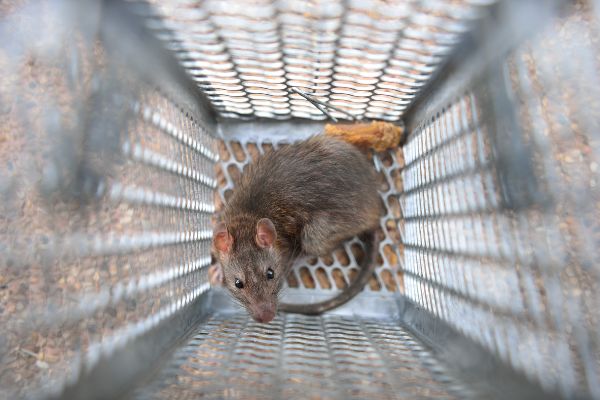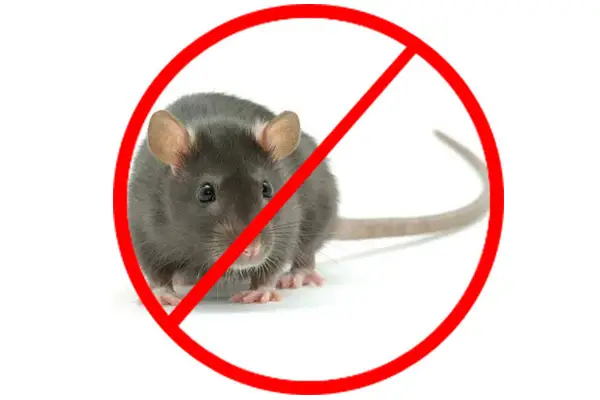Rodent Smoke Test is explored in this helpful blog post today
Uncovering the Truths: Exactly How the Rat Smoke Examination Enhances Insect Control Initiatives
The Rodent Smoke Examination is an innovative technique in parasite control. It utilizes safe smoke to disclose concealed access factors and nesting websites of rats. This method offers a graph of invasions that standard examinations might forget. As parasite management strategies evolve, understanding the implications of this technique becomes vital. What certain benefits does the Rat Smoke Test offer over traditional techniques? Exploring this may clarify its expanding value in reliable parasite control.

What Is the Rodent Smoke Examination?
Different methods exist for spotting rodent infestations, the Rodent Smoke Test stands out as a particularly reliable method. This innovative technique entails introducing a harmless smoke right into a building's framework to trace potential access points and nests. By observing the activity of the smoke, bug control professionals can recognize concealed pathways rats might make use of to get into rooms.
The Rodent Smoke Examination is especially valuable due to the fact that it offers prompt visual responses, enabling for speedy evaluation and activity. It is non-toxic, making it secure for both people and pet dogs, while efficiently highlighting trouble areas that might require additional inspection or treatment. This approach is especially valuable for large or intricate structures where conventional assessment methods may drop brief. Ultimately, the Rodent Smoke Examination functions as a significant device in the collection of pest control methods, boosting the effectiveness of rodent administration initiatives.
Just how Does the Rodent Smoke Test Work?
The Rat Smoke Test operates by introducing a safe smoke into the structure's framework, allowing pest control experts to envision the movement of the smoke as it travels with possible access points and covert pathways - Rodent Smoke Test. This technique starts with sealing the structure to contain the smoke, guaranteeing precise results. When the smoke is launched, technicians observe its dispersal patterns, which reveal areas where rodents may be entering or nesting
The process also helps identify voids and cracks that are not visible to the naked eye. By keeping track of the smoke's habits, bug control professionals can identify susceptabilities in the structure and figure out the most efficient techniques for rodent exclusion and control. This technique not only boosts the understanding of an infestation's source but also aids in creating a comprehensive parasite monitoring strategy tailored to the specific needs of the structure.
Advantages of Utilizing the Rat Smoke Test
The rodent smoke examination uses considerable advantages in pest control by giving exact detection methods for recognizing rodent entrance points - Rodent Smoke Test. This accuracy permits enhanced therapy approaches customized to particular infestations. Therefore, insect control efforts come to be much more efficient and reliable, lessening the danger of future rodent troubles
Precise Detection Approaches
How properly can pest control experts identify concealed rodent infestations? The rodent smoke examination provides a very precise discovery method that boosts conventional parasite control methods. By presenting a non-toxic smoke right into potential entrance factors, experts can observe the smoke's activity, suggesting paths used by rats. This approach exposes hidden nests and burrows that may or else go unnoticed. The visual verification offered by the smoke permits specialists to determine locations requiring instant attention, enhancing the performance of inspections. The rodent smoke test reduces the need for intrusive measures, making sure a more humane method to pest control. In general, this method offers a trustworthy remedy for recognizing rodent task, ultimately bring about more efficient bug monitoring approaches.
Boosted Therapy Strategies
While lots of parasite control approaches count on uncertainty and general assumptions, the rodent smoke examination improves treatment approaches by offering specific understandings into rodent behavior and entry factors. This cutting-edge strategy permits parasite control specialists to recognize concealed pathways and nesting areas with accuracy, facilitating targeted therapies. By imagining smoke patterns, specialists can identify vulnerabilities in frameworks, making certain a thorough feedback to problems. Furthermore, the rodent smoke test minimizes the demand for broad-spectrum chemicals, decreasing chemical exposure and advertising environmental safety. Inevitably, this technique results in more reliable insect management, as it customizes interventions to specific trouble areas, causing quicker resolutions and long-lasting prevention of rodent troubles. Improved therapy approaches contribute to boosted general pest control efficiency.
Determining Entry Information With Smoke
Determining entry factors for rodents can be successfully achieved via using smoke screening, a technique that permits bug control professionals to envision pathways that pests might exploit. During this procedure, a non-toxic smoke is launched right into the atmosphere, disclosing any splits, openings, or gaps where rats can get. The smoke allows service technicians to trace the circulation of air, highlighting potential vulnerabilities in frameworks.
This technique is specifically helpful in commercial structures, where small entry points can bring about significant invasions. By observing the smoke's motion, parasite control experts can figure out which locations require immediate interest and remediation. Furthermore, smoke screening can reveal hidden voids and tooth cavities that may not show up throughout a standard evaluation. Consequently, bug control initiatives end up being extra targeted, reliable, and effective, ultimately resulting in a much more complete strategy to rodent monitoring.
Contrasting Typical Methods to the Smoke Test
Conventional insect detection techniques typically deal with limitations, such as relying upon visual evaluations and traps that might miss out on surprise rodent task. In contrast, the smoke examination uses distinctive advantages by exposing unseen entry points and offering a more extensive evaluation of rodent pathways. This contrast highlights the performance of cutting-edge methods in improving insect control techniques.
Traditional Discovery Limitations
Although standard bug detection methods have actually long been the requirement in handling rodent infestations, they frequently fall brief in efficiency and precision. Traditional strategies, such as traps and lure stations, count greatly on visual examinations and indirect indications of rodent activity. These approaches can be taxing and may miss out on concealed infestations. In addition, they commonly offer incomplete information, leading to ineffective targeting of issue areas. Reliance on acoustic clues or droppings can additionally bring about misdiagnosis, as rats might inhabit locations without leaving obvious indicators. These techniques may not account for ecological variables that affect rodent actions. Pest control experts deal with obstacles in properly evaluating the extent of invasions and establishing appropriate interventions.

Smoke Examination Advantages
While traditional insect detection techniques have their advantages, the smoke test offers unique benefits that improve the effectiveness of rodent control. Standard techniques commonly rely upon aesthetic assessments and traps, which can miss covert infestations or fail to uncover access factors. On the other hand, the smoke test utilizes a non-toxic smoke to disclose paths and nesting websites, offering a complete view of rodent activity. This method Check This Out permits parasite control specialists to determine vulnerabilities in structures better than typical techniques. In addition, the smoke examination can be conducted quickly and with marginal interruption, making it a useful option for residential or commercial property proprietors. Eventually, the smoke test's capacity to discover inaccessible areas settings it as a superior device in the fight versus rodent linked here invasions.
Implementing the Rat Smoke Test in Your Parasite Control Technique
Implementing the Rat Smoke Test can considerably enhance a parasite control technique by giving clear insights into rodent access points and nesting websites. This method includes presenting a safe smoke right into prospective access areas, enabling bug control professionals to observe where the smoke gets away (Rodent Smoke Test). Identifying these getaway courses helps to figure out just how rats access a structure, causing targeted treatments
Incorporating the smoke test right into a bug control strategy calls for careful planning and implementation. Specialists ought to carry out the examination throughout times of top rodent task for optimum effectiveness. Complying with the examination, thorough evaluations must be performed to secure identified entry factors and remove conducive conditions for rodent habitation.
Furthermore, incorporating the findings from the smoke examination with other parasite monitoring techniques, such as baiting and trapping, can cause an extra effective and sustainable option. This critical strategy guarantees that pest control efforts are both lasting and effective.
Often Asked Concerns
Is the Rat Smoke Test Safe for Family Pets and People?
When performed effectively, the rodent smoke examination is normally thought about risk-free for animals and humans. Nonetheless, people ought to guarantee adequate air flow and comply with security guidelines to decrease any kind of prospective risks throughout the screening process.
The length of time Does the Rat Smoke Test Require To Total?
The rodent smoke test typically takes in between half an hour to an hour to complete. This period permits extensive assessment, making it possible for professionals to determine possible entrance factors and efficiently prepare for bug control measures.
Can the Smoke Examination Detect Other Vermin Besides Rodents?
The smoke examination mainly targets rodents, but it can indirectly suggest the presence of other parasites by exposing access points and nesting areas, allowing bug control professionals to examine potential invasions past just rodents.
What Takes place if the Smoke Test Exposes Numerous Entry Factors?
If the smoke examination reveals several access points, insect control specialists will evaluate each area, seal these openings, and implement substantial approaches to avoid additional problems, ensuring a detailed approach to pest administration.
Exactly how Often Should the Rodent Smoke Test Be Done?
The rodent smoke examination should be carried out every year as a preventative action, or much more often if indicators of rodent activity are discovered. Routine evaluations aid preserve efficient parasite control and assurance property stability.
